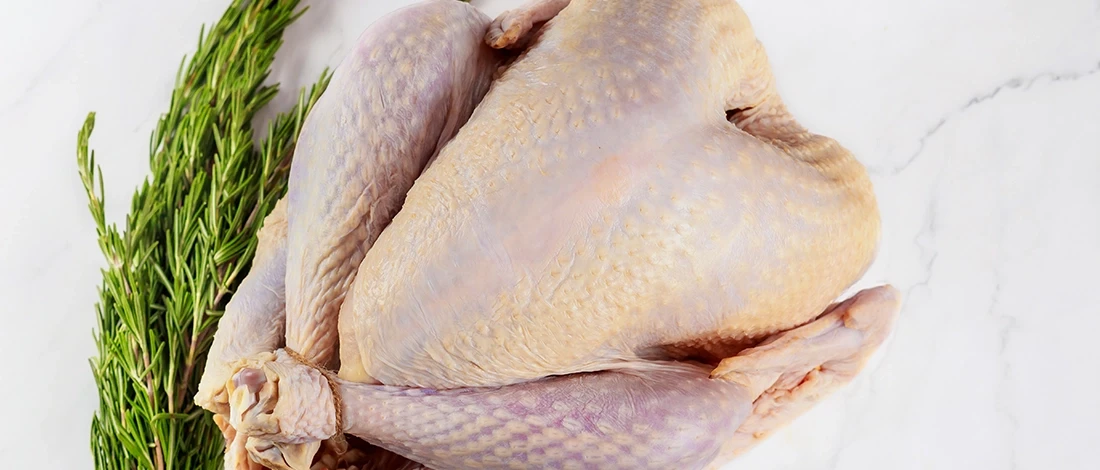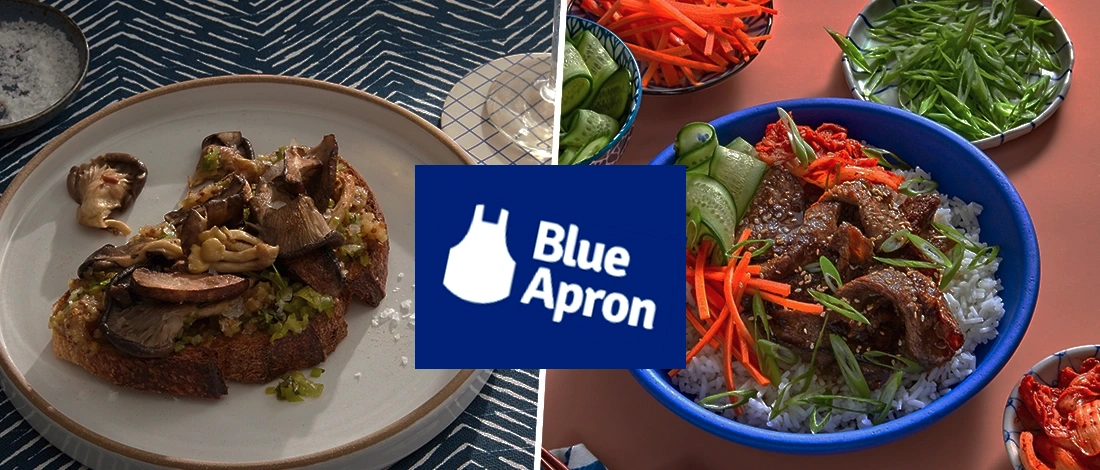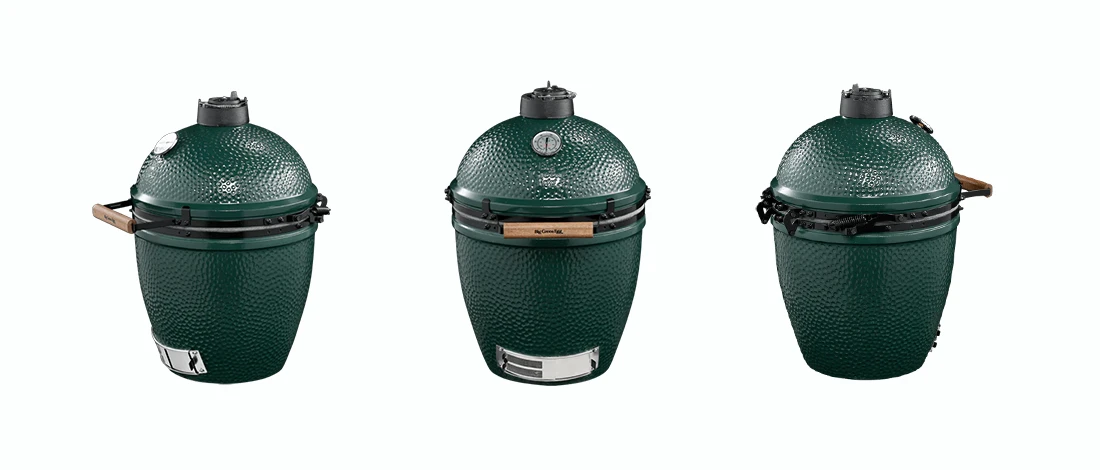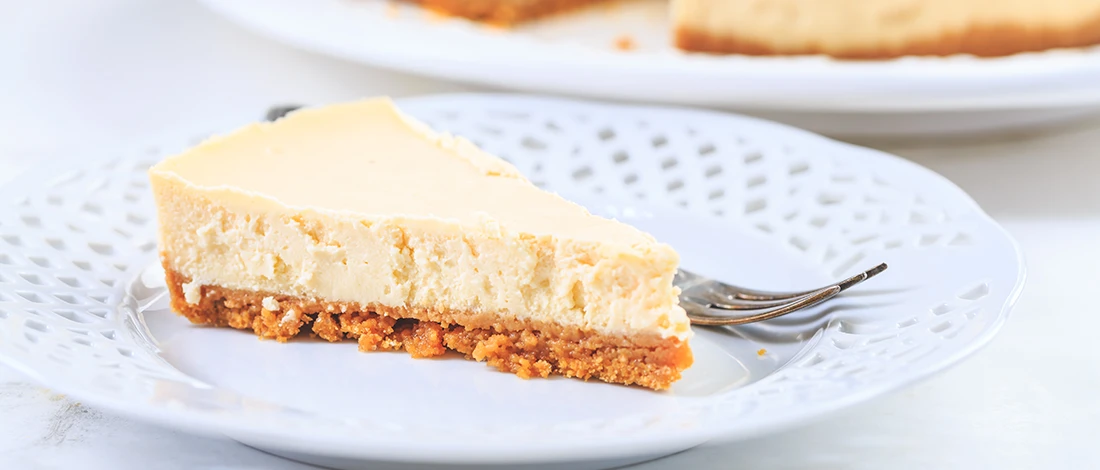Turkey has a lower fat content than chicken which means it can turn out dry. I’ve cooked countless turkeys during the decade I’ve been on a carnivore diet, and I’ve struggled with my fair share of dry turkey meat.
I used different cooking methods until I perfected cooking this type of meat.
Here are all my tips and tricks on how to cook this bird so you’ll always have a juicy, perfectly cooked turkey.
Quick Summary
- The best way to cook a delicious Thanksgiving turkey is to roast it.
- Use tasty pan drippings to make gravy after you cook the turkey.
- Use a meat thermometer to check the internal temperature of the bird.
Preparing a Turkey

Before you get down to roasting, you’ll need to make some preparations.
1. Thaw a Turkey
You’re probably buying a frozen turkey at the supermarket, so you need to allow enough time to defrost it before cooking. If you don’t defrost the turkey, it won’t cook properly.
Loosen the wrapping and put the turkey on a baking sheet. Place the turkey in the fridge until completely defrosted. A turkey needs a day to thaw for every five pounds of turkey. This means a 14-pound turkey will need around 4 to 5 days to thaw.
Tip: If you’re short on time, place the turkey in cold water, and change the water every half an hour until it thaws.
Read More: How to Thaw Meat Fast?

2. Brine

Don’t rinse the turkey [1]. Instead, pat it dry with paper towels and season the meat. You can use butter, sage, rosemary, parsley, and other traditional seasonings.
Tip: Season the turkey two days in advance. Thoroughly salt inside and out. The kosher salt can work into the protein and break it down. This makes the meat tender and juicy as it roasts. The process is called dry brining.
You can also do a wet brining method and immerse the turkey in a salt-water solution. Add moisture to the turkey by stuffing it with aromatics.
You can use citrus fruits, apples, herbs, and vegetables instead of stuffing.
“First, be sure the turkey is in a leak-proof plastic bag to prevent cross-contamination and to prevent the turkey from absorbing water, resulting in a watery product. Submerge the wrapped turkey in cold tap water. Change the water every 30 minutes until the turkey is thawed.”
- United States Department of Agriculture
3. Giblets and Wishbone
Giblets are meaty pieces that tend to hide inside the bird. You should locate and remove them. Also, remove large pockets of fat around the turkey’s neck.
I like to remove the wishbone because it makes it easier to carve the turkey later and achieve neat slices.
Here’s how to remove a wishbone: pull back the neck skin until you locate it. Use a small, sharp knife and cut through the flesh under the wishbone couture on both sides.
Don’t cut too deep, but just enough to free the wishbone. Then ease it out by cutting at the tips.
7 Steps to Roasting a Turkey

Here’s how to cook a turkey step by step.
1. Take Out the Turkey
Take out your whole turkey or turkey breast meat from the fridge half an hour before cooking. This will help the turkey cook more evenly.
Let the turky sit breast side up in a roasting pan. This helps take the chill off and gives the turkey time to dry out, which helps with browning and crisping.
2. Prepare the Roasting Pan
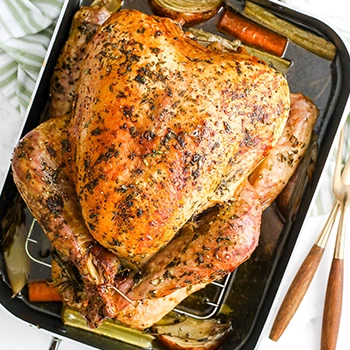
The best turkey gravy is made with pan drippings.
This is why you should add celery, carrots, and onion to the bottom of the roasting pan.
You can also include the neck and gizzards. Cover it with a grill grate.
The vegetables will help flavor the drippings and save them from evaporating.
3. Secure the Skin
Use toothpicks and secure the skin inside the bird near the turkey legs. This helps the bird look better when finished cooking.
4. Heat the Oven

Heat the oven to 425 degrees. While the oven is heating, smear melted butter or olive oil over the turkey and season with salt and pepper. Do this only if you didn’t already brine it.
Tip: Place the turkey into the oven with legs first, turkey breast side up, because the oven is hotter near the back.
This ensures turkey thighs get the high heat they need and the turkey breast cooks at a lower heat.
5. Cook a Turkey
Start by roasting a turkey in a roasting pan at a high temperature to speed up the cooking time and make the legs crispy.
Cook at a high temperature for around 40 minutes, and then lower the temperature to around 330 degrees for the remainder of the cooking time.
Baste the turkey every 45 minutes. Remove it from the oven, close the oven door so that the heat doesn’t escape, and thoroughly baste the turkey.
Tilt the pan if needed, and use a baster to scoop the turkey drippings and drizzle them over the bird.
This cools down the turkey’s surface and slows down the cooking, which ensures the breast meat cooks at the same rate as the legs and the thighs.
Related Articles:
6. Let It Rest
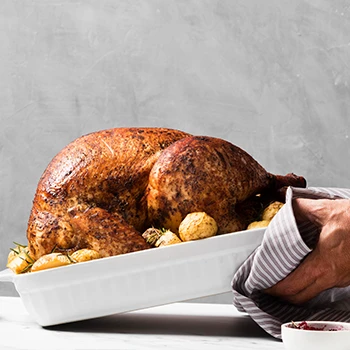
Once the turkey is done, move it from the oven and rest it in a warm place for up to 45 minutes. This lets the juices reabsorb back into the turkey, so they don’t run when you carve.
Note: Don’t cover the turkey too tightly, or the skin won’t be crisp. Tent it loosely with aluminum foil.
When you remove the turkey from the oven, grab one side of the roasting rack with an oven mitt and tilt the pan so that the liquids inside the turkey run out into the pan.
You can use these liquids to make turkey gravy. Then lift the whole turkey and move it to the cutting board.
Read More: How Long to Let Meat Rest?
7. Carve It
Carve the turkey by removing the wings first, then the thighs, and finally the turkey breast. Once you remove the meat, separate the thighs and drumsticks and carve the turkey breast into individual slices.
How Long Does It Take to Cook a Whole Turkey?
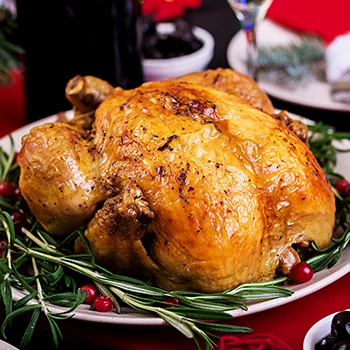
The amount of time it takes to cook a whole turkey depends on the size of your bird and if it’s stuffed or unstuffed. A general rule is to cook for 13 minutes per pound.
This means a 16-pound turkey needed three and a half hours to cook.
The bird’s temperature should be 165 degrees when it’s done cooking [2].
To check if your roasted turkey is done, see if the juices run clear when you pierce the thigh where it meets the body. If they don’t, return the turkey to the oven and cook for another 20 minutes.
Use a meat thermometer to check if the turkey is done cooking. Make sure to insert the tip into the thickest part of the thighs, but don’t touch the bone because this will result in an incorrect reading. You can also check the temperature in the breast.
Remove the turkey from the oven when the meat thermometer reads the internal temperature five degrees below the doneness because the turkey will continue to cook even after you remove it from the oven. Removing ensures you don’t end up with turkey dry.
Storing a Turkey

Turkey is a huge bird, so you’re bound to have leftovers. Store them in an airtight container for four days in the fridge or two months in the freezer.
Also, ensure not to leave the turkey sitting on the table too long. You need to refrigerate the meat within two hours of cooking because the risk of bacteria spreading exponentially increases after this time.
You also need to properly store the turkey before cooking. Take off all the wrappings, wipe them with paper towels, and place them on a tray or a plate wide enough to contain juices or blood that can seep.
Then cover the turkey with foil, and ensure it doesn’t touch any other food in the fridge.
FAQs
What Is the Best Way to Cook a Turkey to Keep It Moist?
The best way to cook a turkey to keep it moist is to season and brine the turkey before cooking. Cover it with melted butter or olive oil, so you have white and dark meat that’s moist.
Should I Cover My Turkey with Foil While Cooking?
Yes, you should cover your turkey with foil while cooking. Ideally, the turkey should spend time both covered and uncovered so it doesn’t dry out. You can cover it for most of the cooking time, but remove the foil for the last half an hour so the skin can crisp.
Do You Put Water in the Bottom of the Roasting Pan for Turkey?
No, you don’t put water in the bottom of the roasting pan for turkey. If you put water, you’ll cook a turkey with steam in a moist heat method, but it’s better to roast it for juicy, crispy results.
How to Keep a Smoked Turkey Warm?
To keep a smoked turkey warm, wrap it in aluminum foil and then a towel, and place it in a cooler without ice (a pre-warmed cooler is even better). This can keep the turkey warm for a few hours without drying it out.
References:
- https://www.usda.gov/media/blog/2013/11/21/wash-or-not-wash-your-turkey
- https://www.usda.gov/media/blog/2016/11/22/how-cook-thanksgiving-turkey


